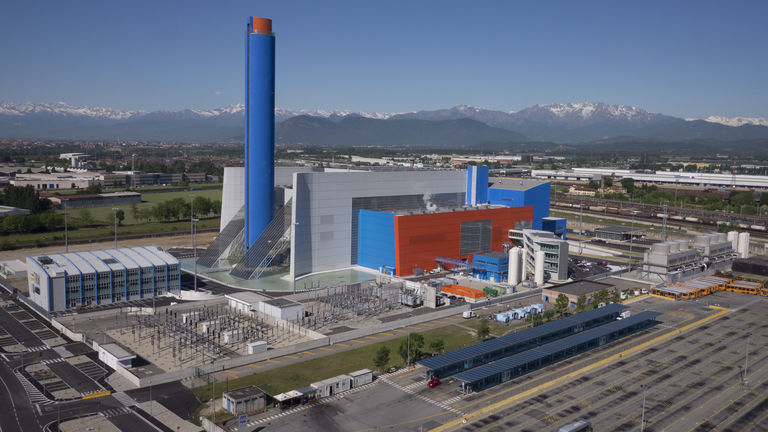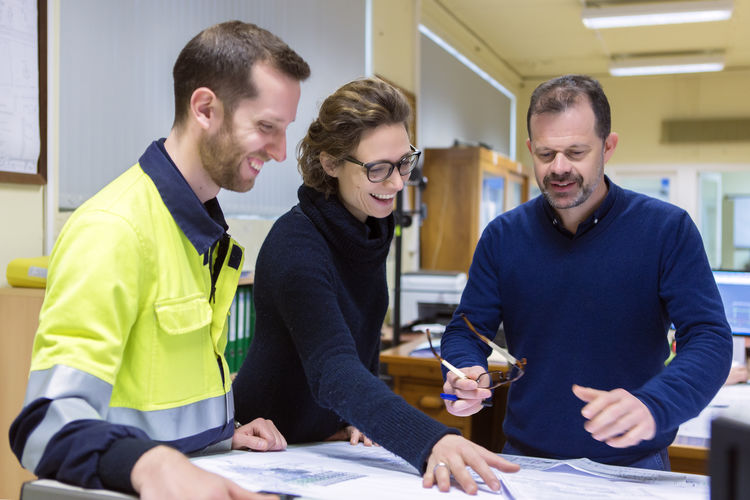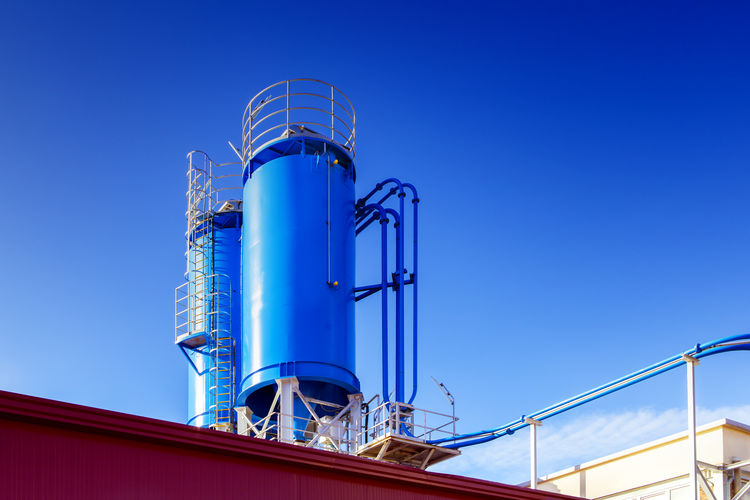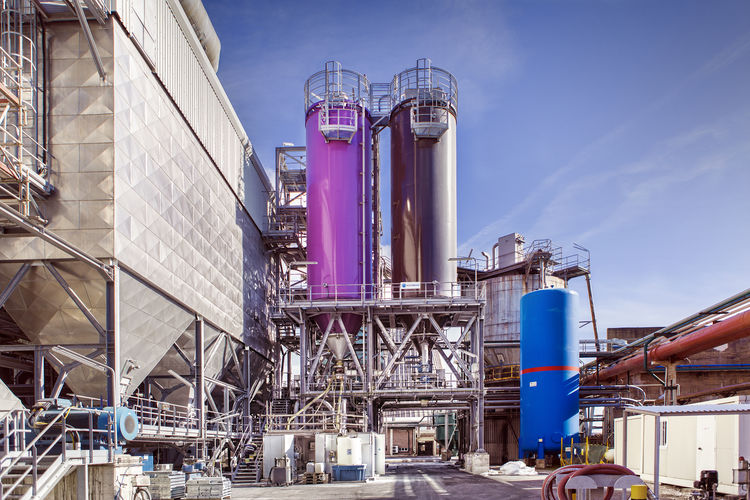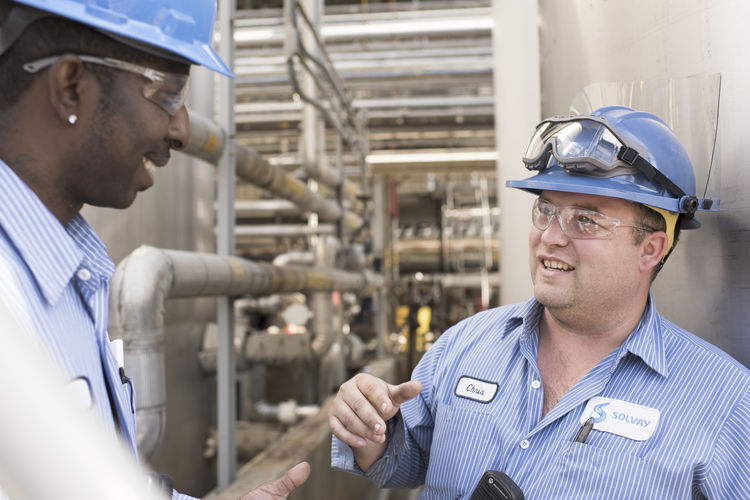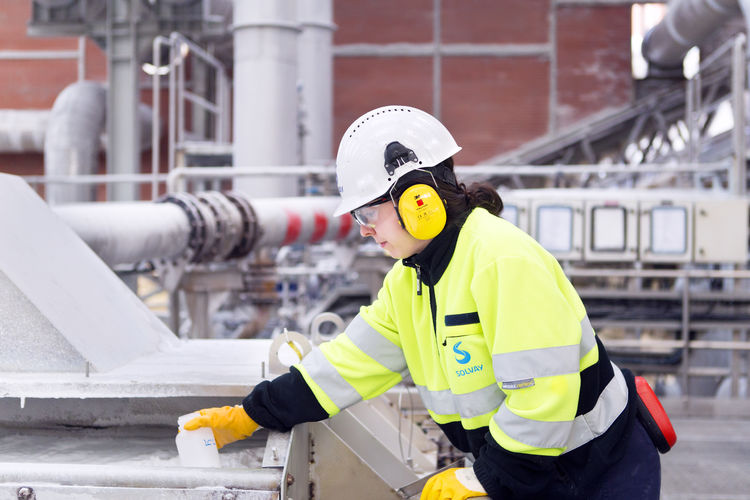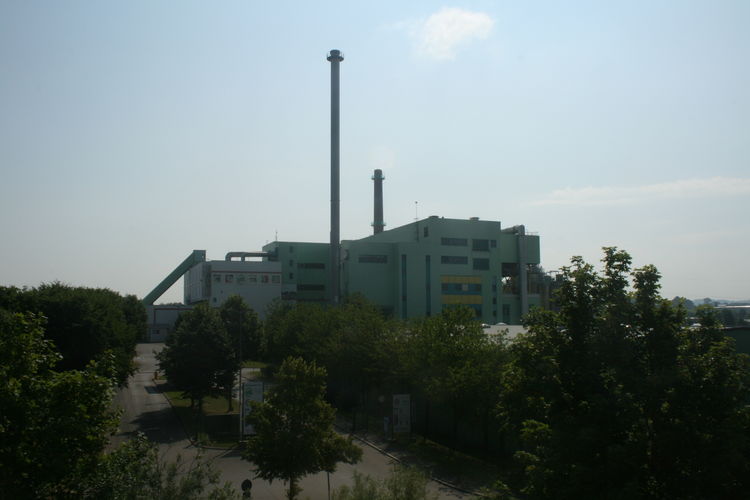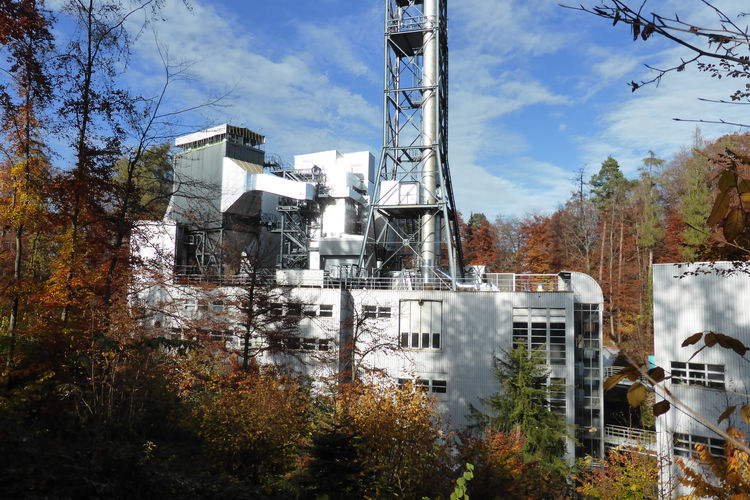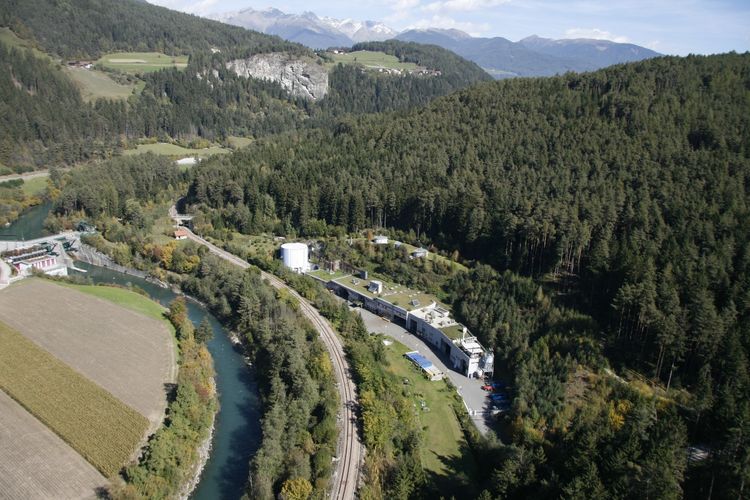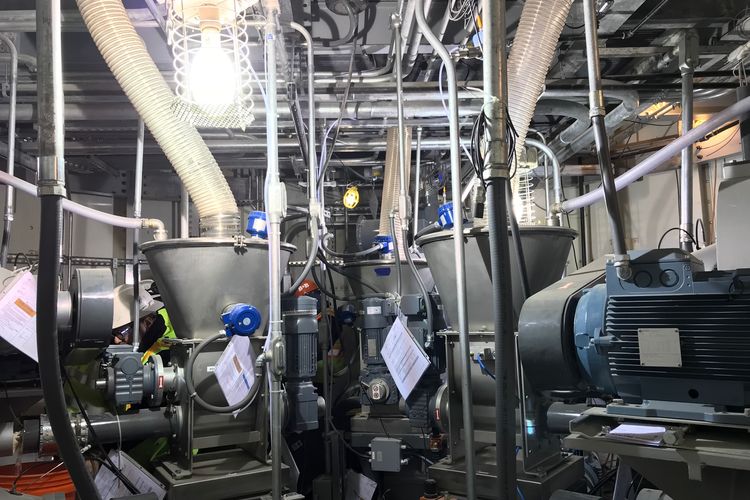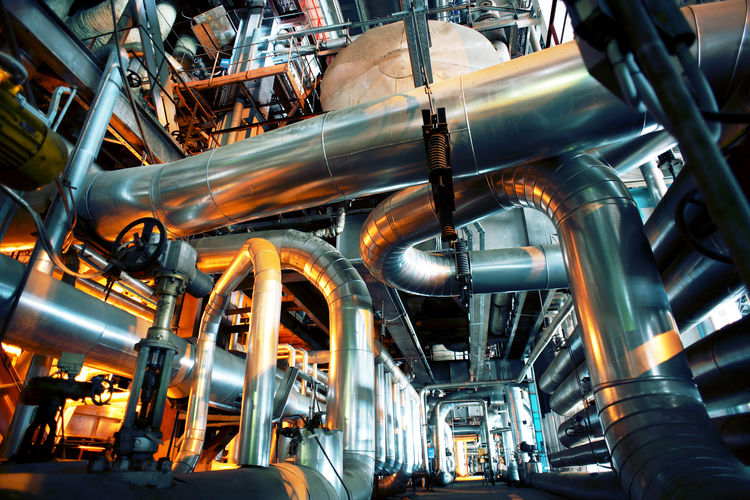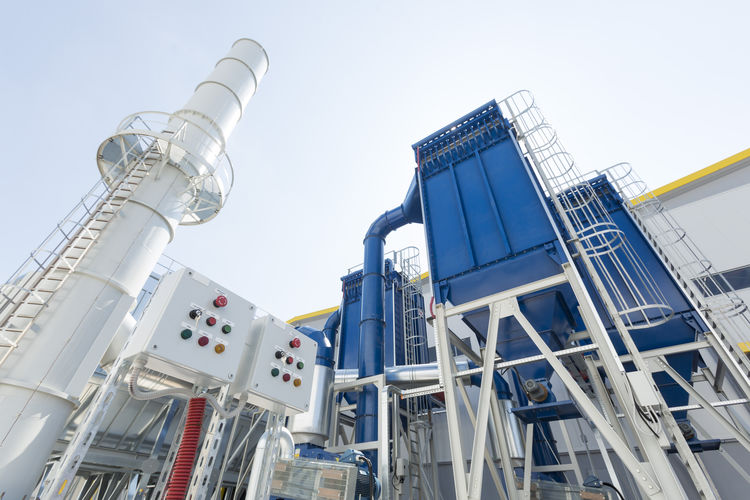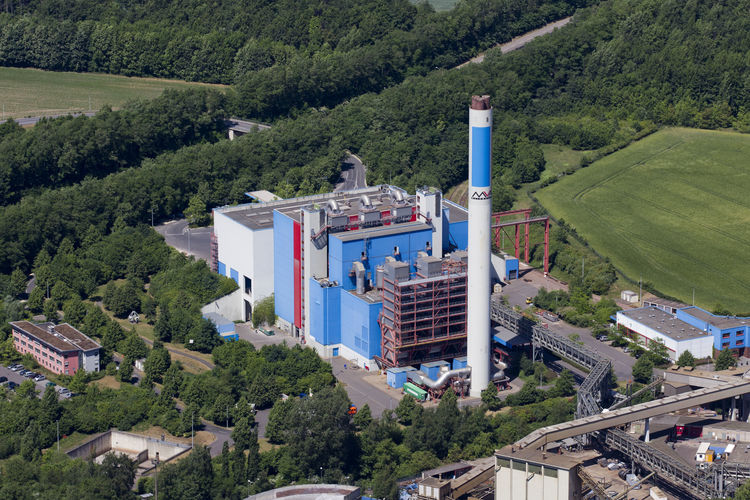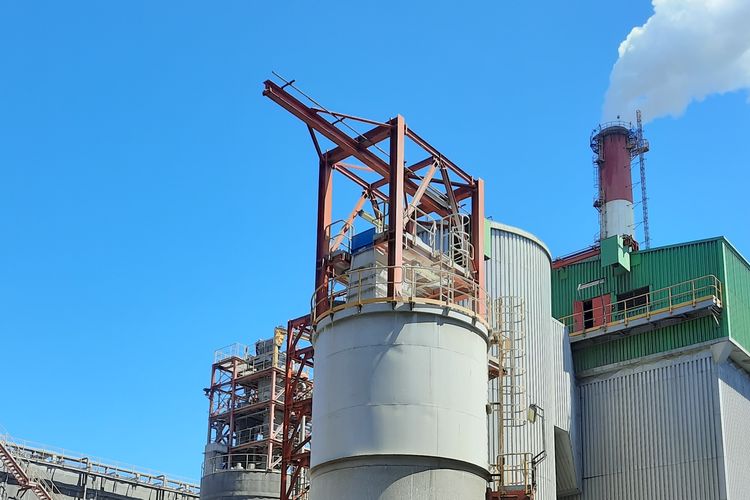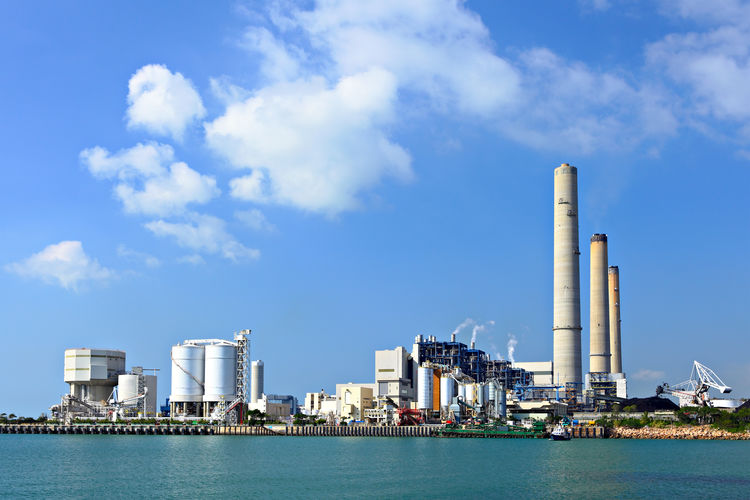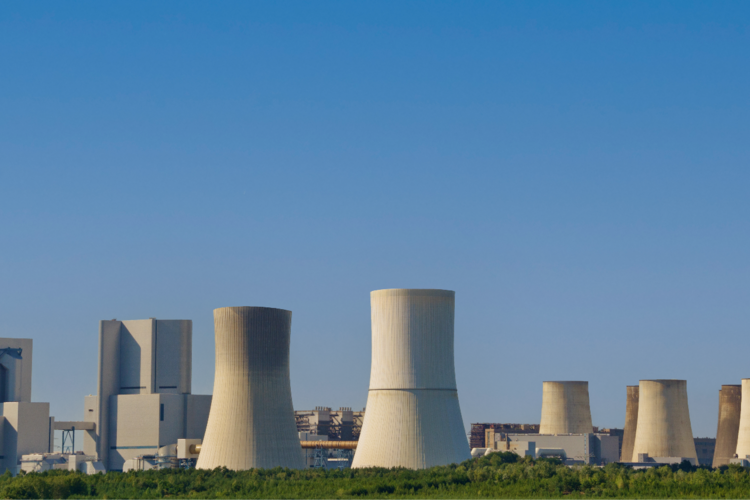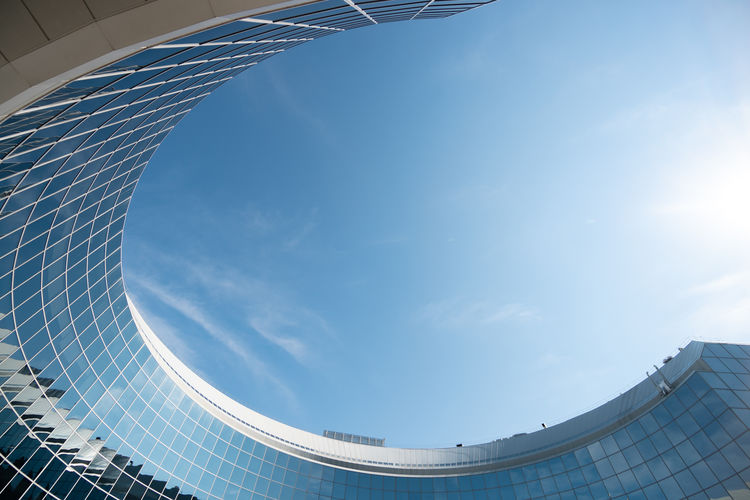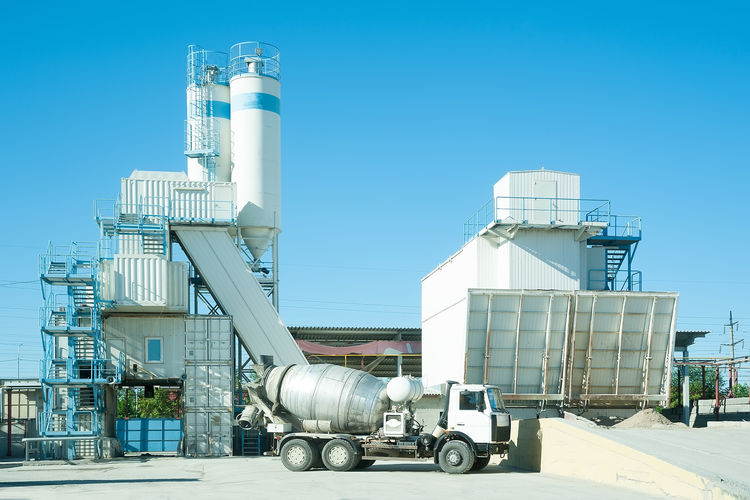TRM Key figures - June 2019
In electric mode, around 350,000 MWh of electricity are produced yearly
In cogeneration mode, up to 170,000 MWh of thermal energy and 320,000 MWh of electricity are produced
533 ktons of municipal solid waste were incinerated in 2018
The authorised emission limit values for the plant:
| Pollutant | Inlet Concentration (mg/Nmc) | At stack (mg/Nmc) |
| HCl | 800-850 | 1,5 |
| SOx | 65-70 | 0,8-1,0 |
| HF | n.d | <0,05 |
TRM’s needs: high capacity waste-to-energy operations
Electricity and heat from a big city’s waste
TRM stands for Trattamento Rifiuti Metropolitani S.p.A, the company that designed, built and currently runs the waste-to-energy plant in Turin, the fourth largest city in Italy.
Preparing the switch to cogeneration
The plant incinerates municipal waste on three lines, producing 350,000 MWh of electricity yearly. In the near future, it will operate in cogeneration to also produce thermal energy for the local heating network.
All this needs to be done while complying with emission limit values for waste-to-energy facilities imposed by EU regulations, as well as with local legislation, in order for the plant to be granted its specific operation permit.
What SOLVAir® provides to TRM
The removal of all acid gases
The plant is equipped with a SOLVAir® Dry Sorbent Injection (DSI) solution, which enables the full removal of acid gases in its emissions in order for the plant to be able to operate in compliance with emission limit values required by law for the waste-to-energy industry.
A tail-end full flue gas treatment setup
The plant’s flue gas cleaning setup is as follows: an electrostatic precipitator with the injection of sodium bicarbonate and activated carbon, followed by a bag filter and a DeNOx SCR.
Benefits for TRM
Hassle-free operation
SOLVAir®’s technology provides the efficient removal of acid gases in waste-to-energy emissions without producing any liquid effluents, as is the case when a wet scrubber is used.
Optimal energy efficiency
SOLVAir®’s dry sorbent injection method also offers the advantage of working in an optimal temperature window to operate the tail-end DeNOx SCR, without having to reheat the flue gases for their treatment, thus improving energy efficiency.
A virtuous green cycle
Finally, the residues collected in the bag filter are recycled at our SOLVAL platform, where they’re transformed into a brine to be used at Solvay’s soda ash production facility in Rosignano Solvay, in central Italy.
SOLVAir® Solutions let us have complete control over the concentration of acids in our flue gases, thus improving the efficiency of the subsequent cleaning procedures
Requirements of the legislation for flue gas treatment in the north of Italy
- Total dusts: 5 mg/Nm³
- Hydrochloric Acid (HCI): 5 mg/Nm³
- Hydrofluoric Acid (HF): 0.5 mg/Nm³
- Sulphur Oxides (SO2): 10 mg/Nm³
- Nitrogen Oxides (NO2): 70 mg/Nm³
- Total Organic Carbon (TOC): 10 mg/Nm³
- Carbon Monoxide: 50 mg/Nm³
- Ammonia (NH3): 5 mg/Nm³
- Polycyclic Aromatic Hydrocarbons (PAH): 0.005 mg/Nm³
- Dioxins and Furans (PCDD + PCDF): 0.05 ngTEQ/Nm³
- Dioxin-Like Polychlorobiphenyls (dl-PCB): 0.1 ngTEQ/Nm³
- Cadmium + Thallium (Cd + Tl): 0.03 mg/Nm³
- Mercury (Hg): 0.05 mg/Nm³
- Zinc (Zn): 0.5 mg/Nm³
- Heavy Metals (Sb + As+ Pb+ Cr + Co + Mn + Ni + V + Sn): 0.3 mg/Nm³
